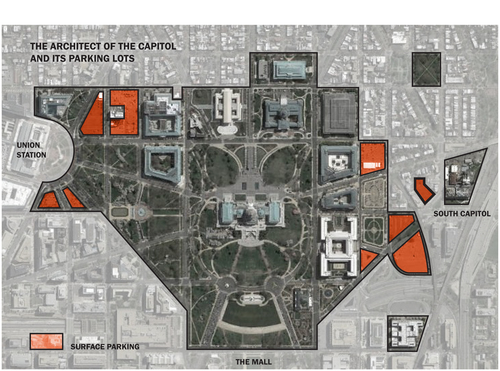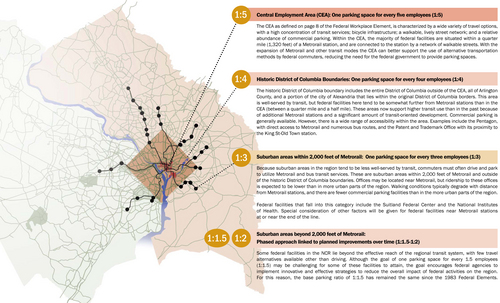Roll Call recently made a great point about the Capitol’s parking problem
In a recent post about cleaning up after Snowzilla, Roll Call, a newspaper that covers Congress, published a graphic showing that if you combined all the parking lots on the Capitol Grounds in need of plowing, they’d cover the National Mall. That’s a crazy amount of parking.

Imagine if some of Washington’s best locations for parks or buildings were parking lots! You don’t have to! It’s like that today. Image by Roll Call’s Sean McMinn and Jia You.
Acres of surface parking lots surround the Capitol and its accessory buildings, and the question of whether they should even be there has long been a sore spot for those paying attention to land use in the District.
That amount of parking is particularly disheartening when you consider that all of these lots used to be blocks of apartments and offices that were very welcoming to people. The McMillan Commission imagined monumental office buildings surrounding the Capitol. In the 1920s, Congress expanded that vision dramatically, adding the open spaces to the north and buying up the lots to the south for future office buildings.
Now, they’re parking lots, or parks on top of parking lots. Here’s a map of all the surface parking on the Capitol Grounds:
Congress gets a lot more parking than the rest of the government
The branch of the government that manages the land, the Architect of the Capitol is holding onto the land for now. It likes providing ample parking spaces for legislators, staff, and employees. The AOC won’t say exactly how much parking, but a 2005 master plan allotted 5,800 spaces to the House of Representatives alone. Depending on how much the Senate, Supreme Court, Library of Congress, and support staff get, the number is probably far higher.
Because Congress writes the rules, they’ve never been subject to review by the National Capital Planning Commission, which sets the parking regulations. The AOC’s independence and access to funding has led to a bad reputation, from architecture critics to Congress itself.
To be fair, the AOC does plan to eventually spruce up their properties. Their 2011 Master Plan aims to eliminate all surface parking lots by 2026. But that master plan is short on details for how they’d do that, and it’s not clear whether they’d bring the amount of parking in line with the rest of the Federal Government’s limits on parking.
Given the sheer volume of parking at the Capitol complex, along with the possibilities for how we could otherwise use the land, the matter of how to scale it back deserves more thought.
Correction: This post originally referred to Roll Call as ‘a blog that covers Congress.’ While the article at hand was filed on Roll Call’s blog, it’s more accurate to call the publication a newspaper. Also, it has been clarified to note that the 5,800 figure for parking spaces is only for people who work at the House of Representatives.


